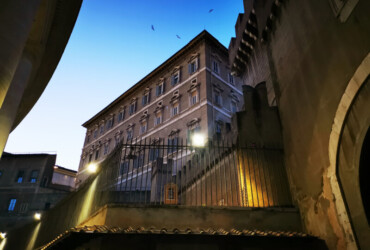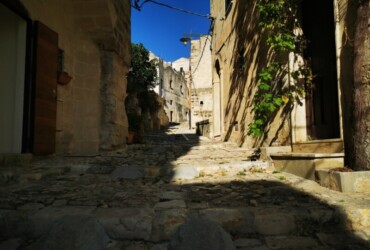Sansepolcro was a significant discovery, during a weekend spent in Tuscany: a small city with many places to visit and as many stories to discover and tell when you came back home. In ancient times, the village was known as Burgus Sancti Sepulchri or Borgo Sansepolcro, and its origins date back to the tenth century: it is in this period of history that the pilgrims Arcano and Egidio built a chapel here to preserve the relics of the Holy Sepulcher they had with them. The chapel then became Abbey, and the city was disputed between Arezzo, Perugia, Città di Castello and Rimini as well as the papacy, Florence and Milan.
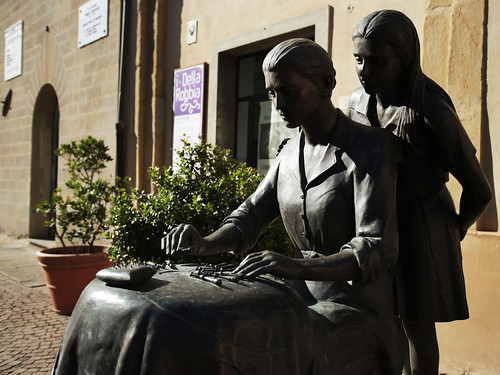 The battle of Anghiari brought the town under the control of Florence. Nowadays Sansepolcro is undoubtedly famous for two things: this is where the painter Piero della Francesca was born (1415-1492) and the sisters Adele and Ginna Marcelli have created, precisely in Sansepolcro, the lace that in the area is called “Trina a spilli” (bobbin lace). I have discovered, here, that there is the Aboca Museum: it is a museum that “tells” the aromatic and medicinal herbs over the centuries, through herbaria, books of pharmaceutical botany, ancient mortars and more. The museum is divided into different rooms, according to the “development of history”.
The battle of Anghiari brought the town under the control of Florence. Nowadays Sansepolcro is undoubtedly famous for two things: this is where the painter Piero della Francesca was born (1415-1492) and the sisters Adele and Ginna Marcelli have created, precisely in Sansepolcro, the lace that in the area is called “Trina a spilli” (bobbin lace). I have discovered, here, that there is the Aboca Museum: it is a museum that “tells” the aromatic and medicinal herbs over the centuries, through herbaria, books of pharmaceutical botany, ancient mortars and more. The museum is divided into different rooms, according to the “development of history”.
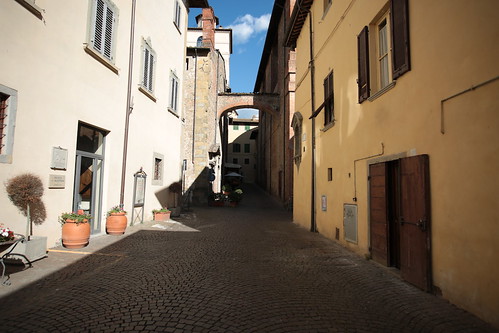 To give you some examples, the “Hall of Mortars” is all about mortars and their tradition, the “history room” exposes the texts of the past; in the Antica Spezieria an ancient workshop of natural remedies has been rebuilt, and in the Cell of Poisons you will find some examples dangerous products for man. Opening hours vary depending on the time of year: from April 1 to September 30, it is open every day from 10:00 to 13:00 and from 15:00 to 19:00; from 1 October to 31 March it is open from Tuesday to Sunday from 10:00 to 13:00 and from 14:30 to 18:00 (it is apparently closed on 25th and 26th of December and 1st January). The ticket costs € 8, and there is an official website of the museum (which, unfortunately, is only in italian).
To give you some examples, the “Hall of Mortars” is all about mortars and their tradition, the “history room” exposes the texts of the past; in the Antica Spezieria an ancient workshop of natural remedies has been rebuilt, and in the Cell of Poisons you will find some examples dangerous products for man. Opening hours vary depending on the time of year: from April 1 to September 30, it is open every day from 10:00 to 13:00 and from 15:00 to 19:00; from 1 October to 31 March it is open from Tuesday to Sunday from 10:00 to 13:00 and from 14:30 to 18:00 (it is apparently closed on 25th and 26th of December and 1st January). The ticket costs € 8, and there is an official website of the museum (which, unfortunately, is only in italian).
As I told you at the beginning, Sansepolcro was the birthplace of Piero Della Francesca. The civic city museum, located in the Palazzo Della Resistenza, houses some of the works of the great painter: the “Polyptych of Mercy” (1444-1464), the “Resurrection” (1450-1463), “San Giuliano” (1454- 1458) and “San Ludovico di Tolosa” (1460). The museum opened in 1975 and is divided into ten exhibition rooms and three floors (basement, ground floor and first floor). The opening hours varies according to the season: in winter, from 25 September to 9 June, it is open from 10:00 to 13:00 and from 14:30 to 18:00; in summer, from 10 June to 24 September, it is open from 10:00 to 13:30 and from 14:30 to 19:00 (so a more extended half hour in the morning). The closing days are December 25th and January 1st; the entrance fee has a price that varies depending on how many things you want to see: € 11 for the Civic Museum, the exhibition (of the museum) and the House of Piero Della Francesca, while it costs € 10 for the Civic Museum and the display. For all other information, I refer you, of course, to the official website of the museum itself.
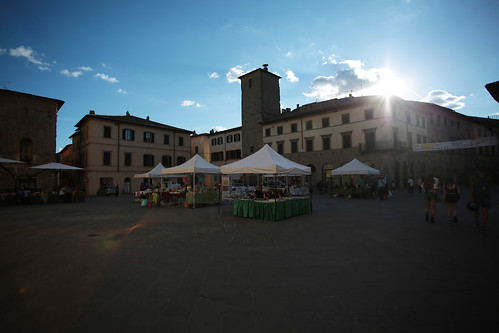 Is there anything else to see in the city? Of course, many things! Surely the Duomo, with its wooden crucifix dating back to the ninth century, and the Church of San Francesco that still preserves the facade, the bell tower and the original high altar two-thirteenth century (the interior was restored in the eighteenth century and interior houses works of the ‘500 and’ 600). The Medici Fortress of Sansepolcro was built in the 14th century and restored at the beginning of the 16th century to a design by Giuliano da Sangallo. Finally, it is still possible to see one of the four gates of the medieval walls: Porta Fiorentina, although today it may seem an “anonymous door to any wall”, is the only survivor!
Is there anything else to see in the city? Of course, many things! Surely the Duomo, with its wooden crucifix dating back to the ninth century, and the Church of San Francesco that still preserves the facade, the bell tower and the original high altar two-thirteenth century (the interior was restored in the eighteenth century and interior houses works of the ‘500 and’ 600). The Medici Fortress of Sansepolcro was built in the 14th century and restored at the beginning of the 16th century to a design by Giuliano da Sangallo. Finally, it is still possible to see one of the four gates of the medieval walls: Porta Fiorentina, although today it may seem an “anonymous door to any wall”, is the only survivor!
Finally, I would like to point out that every second Sunday of September, precisely in Sansepolcro, there is the Palio della Balestra: a historical event that has been held continuously since the fifteenth century, between the cities of Gubbio and Sansepolcro.
Tuscany: what to do and see in Sansepolcro


